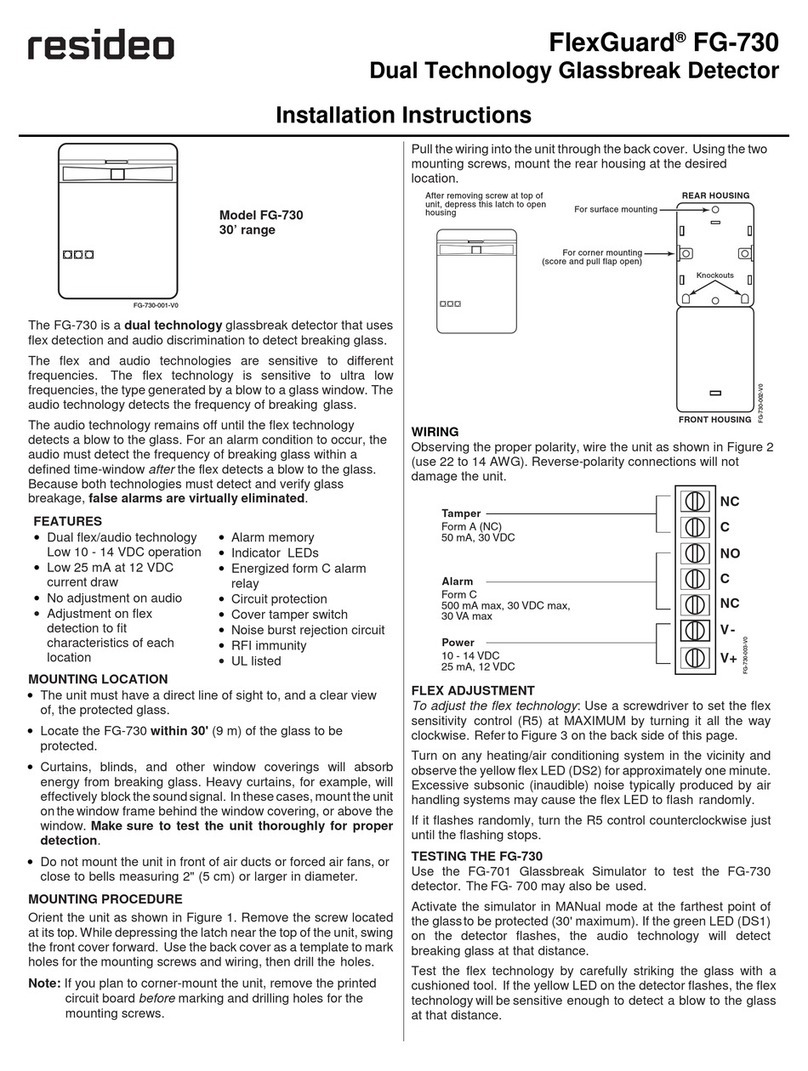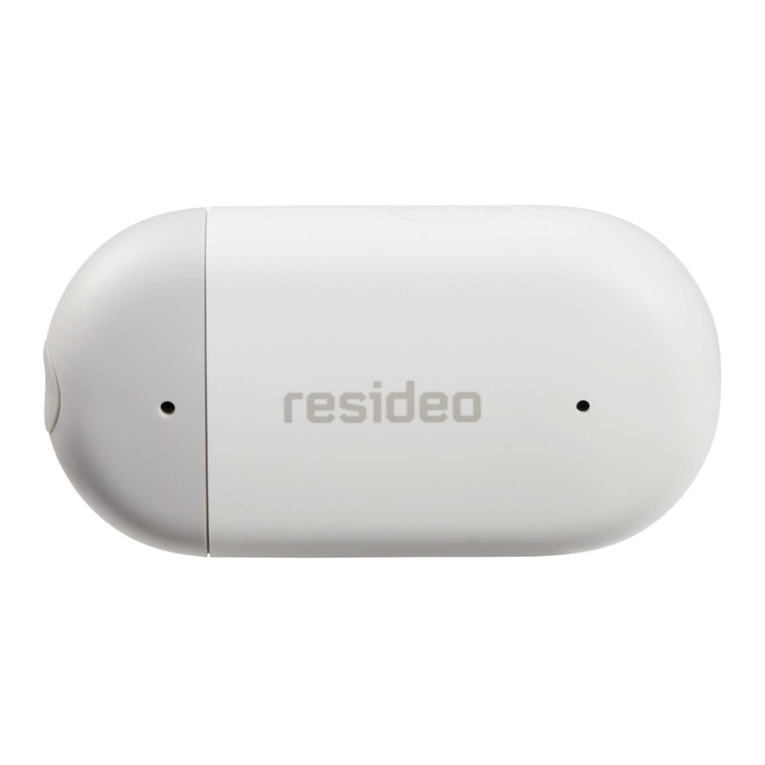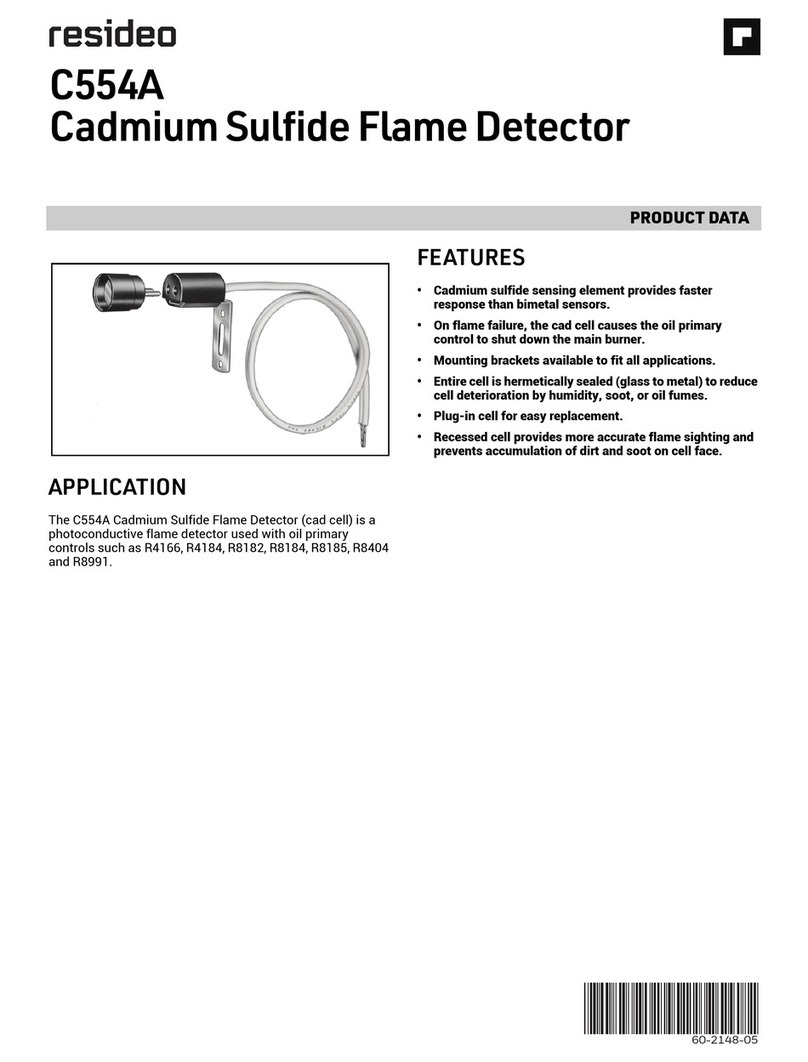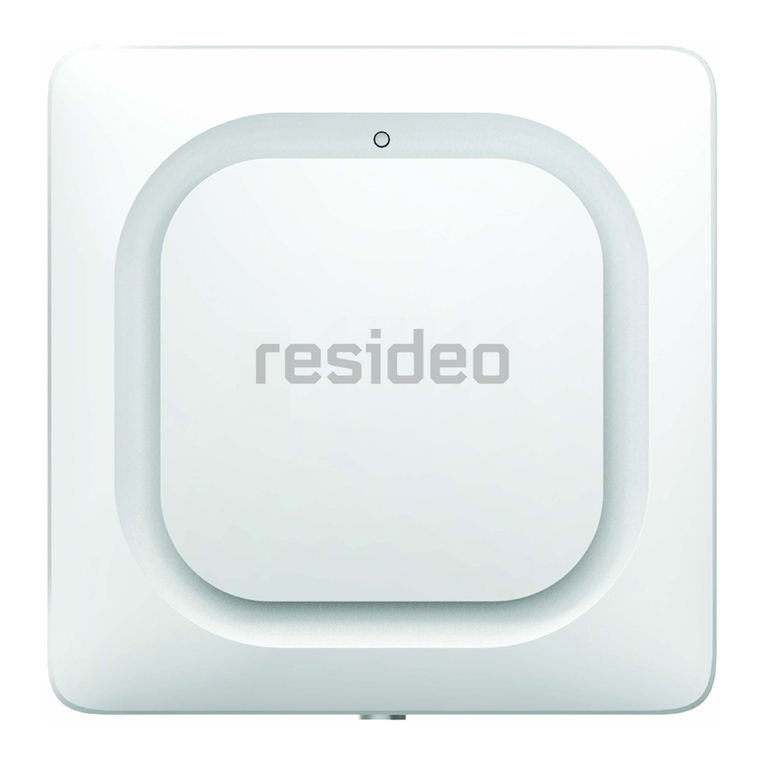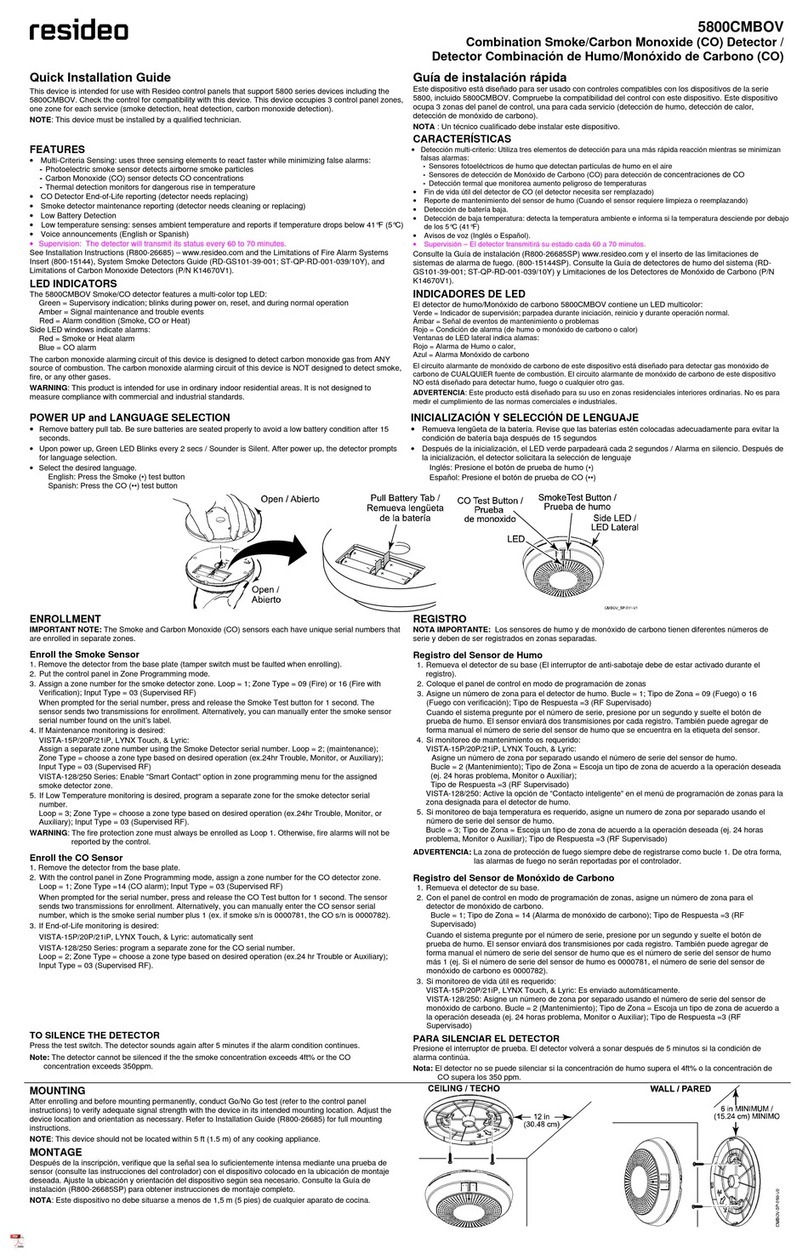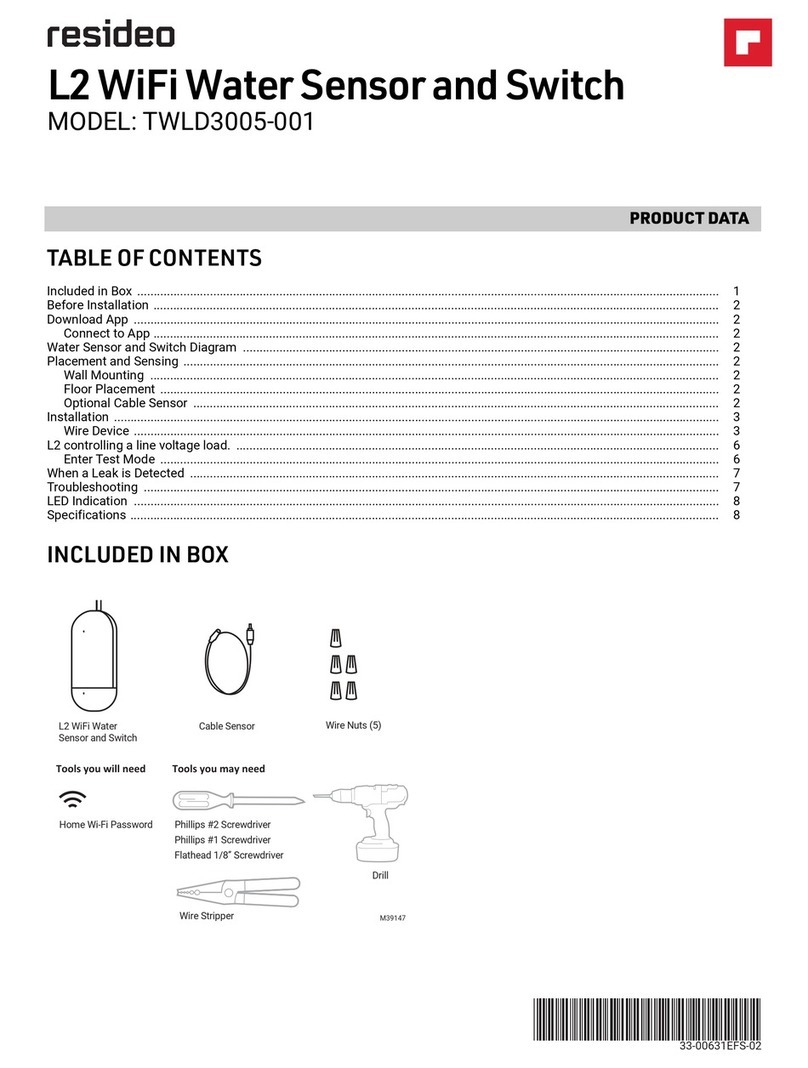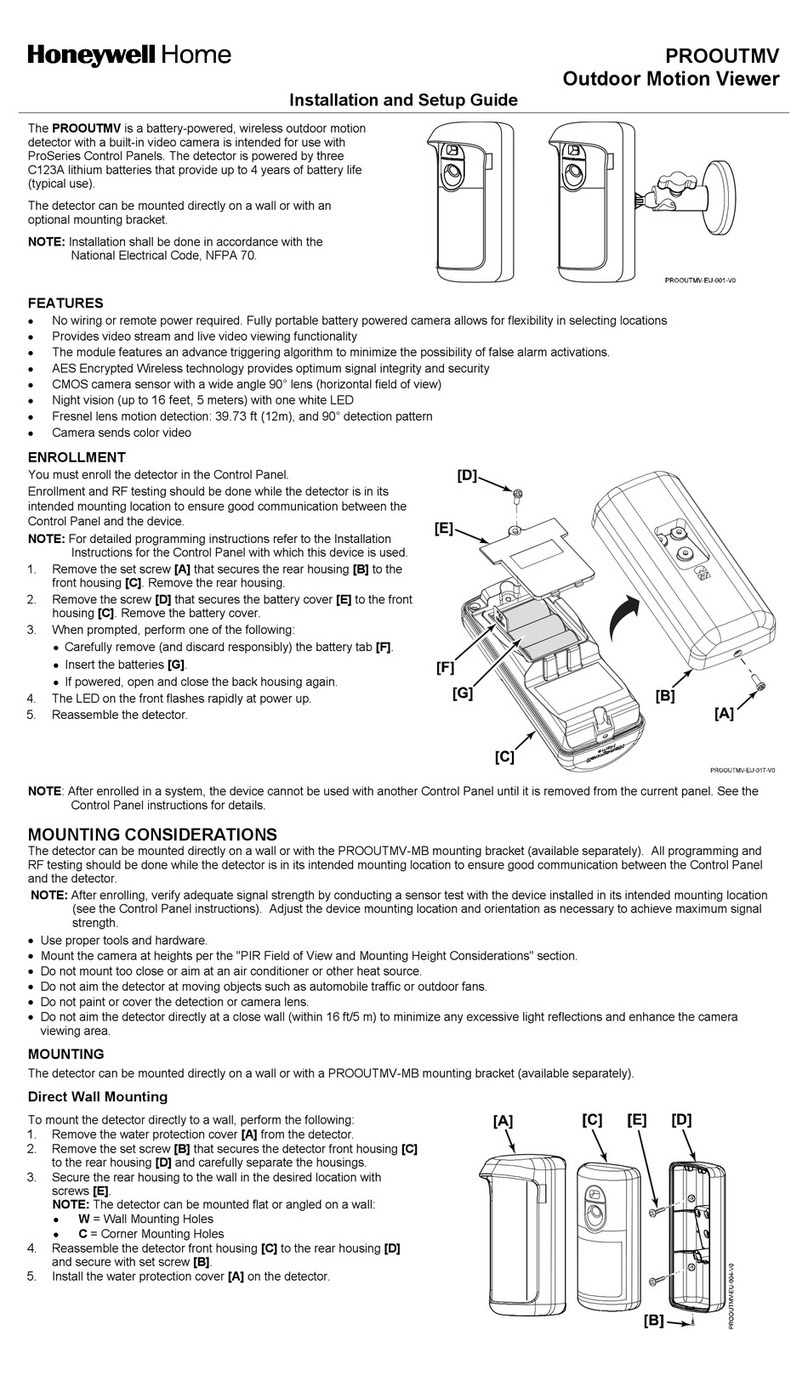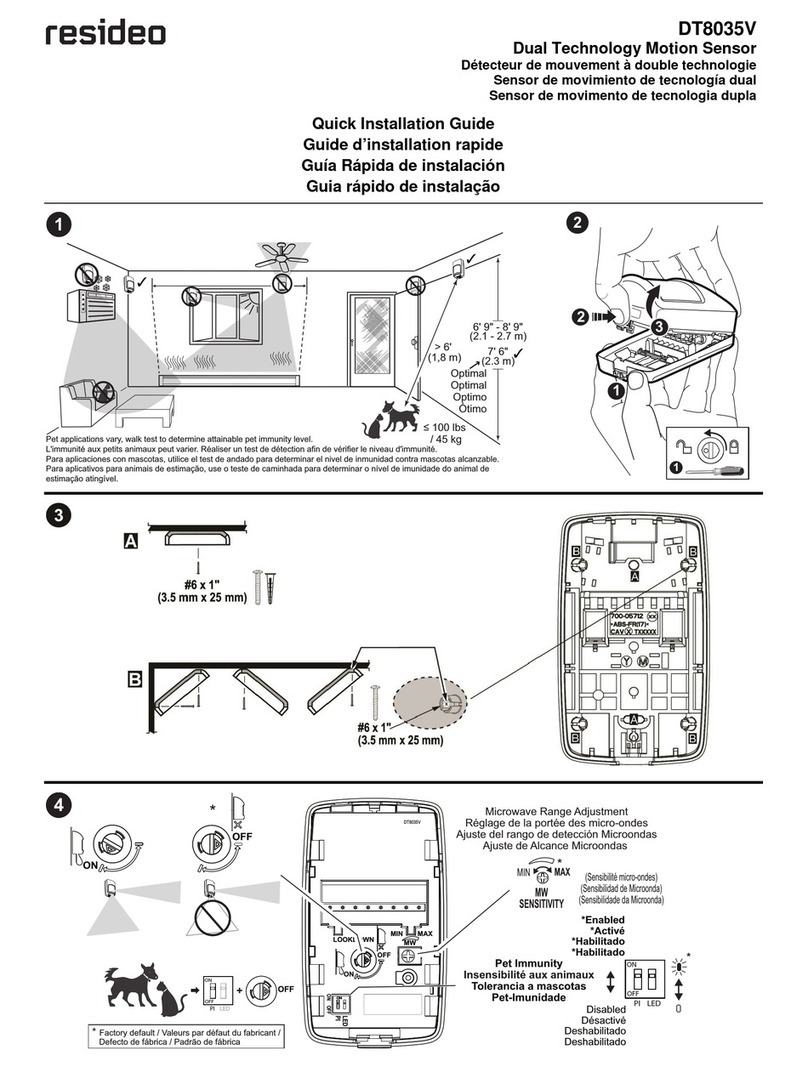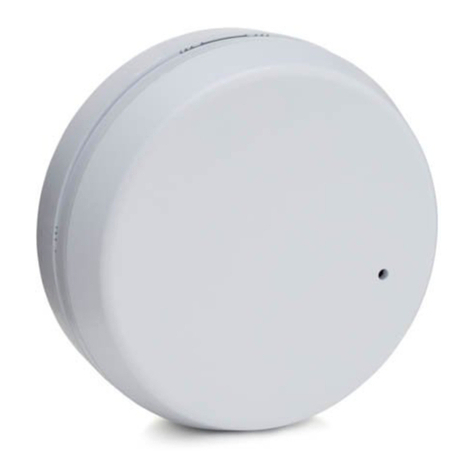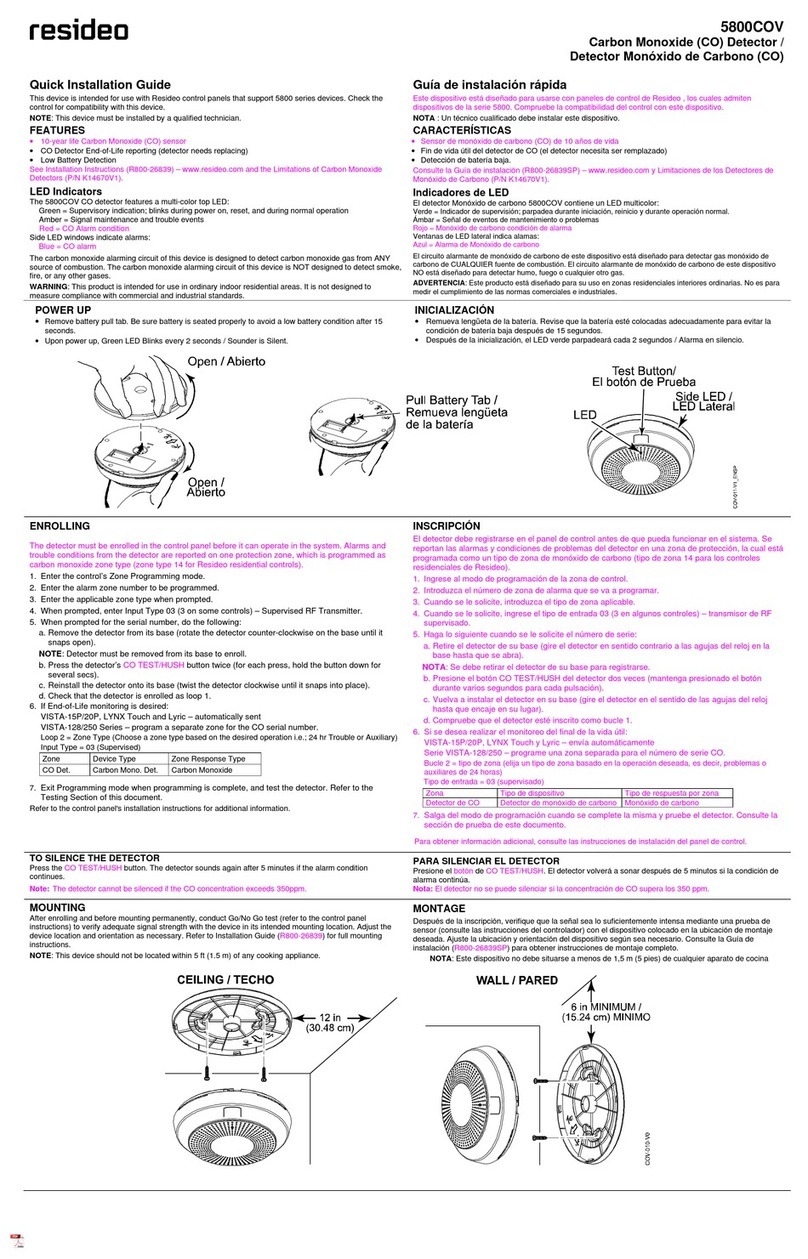
Detection Method...................... Passive Infrared
Initial Warm Up.......................... < 60 seconds
Dimensions ............................... Height: 8 in. (203mm), Width: 3.2 in. (82mm), Depth: 4.3 in. (109mm)
Mounting Height........................ 2.7 - 4ft (0.8 - 1.2m) To the center of lens.
Range......................................... Adjustable up to 40ft (12m)
Pattern ...................................... 90° pattern consisting of 13 zones. This pattern can be adjusted in 15° increments from center up to 45°.
Sensitivity.................................. 3.6° F at 2.0ft/s (2.0° C at 0.6m/s)
Detection Speed........................ 1ft –6ft 7in /s (0.3 - 2m/s)
Operating Voltage..................... 3VDC (uses 2 Lithium Battery 1.5VDC AA cells) Energizer L91 or equivalent
Transmission Lockout.............. Adjustable 120sec or 5sec
Alarm Period.............................. ~ 2 seconds
LED Indicator............................. Red –Warm-up, Alarm, Masking Detection.
Weatherproof............................. IP54 compliance
Operating Temperature............. –40°F to +140°F (–40°C to + 60°C)
Humidity .................................... 95% Max
Accessories (included)............. Screw kit, detection masking strips.
FEDERAL COMMUNICATIONS COMMISSION (FCC) & INDUSTRY CANADA (IC) STATEMENTS
The user shall not make any changes or modifications to the equipment unless authorized by the Installation Instructions or User's Manual.
Unauthorized changes or modifications could void the user's authority to operate the equipment.
CLASS B DIGITAL DEVICE STATEMENT
This equipment has been tested and found to comply with the limits for a Class B digital device, as defined by FCC Rules Part 15.105. The
Class B Digital Device statement can be viewed at:
https://customer.resideo.com/en-US/support/residential/codes-and-standards/FCC15105/Pages/default.aspx
FCC / IC STATEMENT
This device complies with Part 15 of the FCC Rules, and Industry Canada’s license-exempt RSSs. Operation is subject to the following two
conditions: (1) This device may not cause harmful interference, and (2) This device must accept any interference received, including
interference that may cause undesired operation.
Cet appareil est conforme à la partie 15 des règles de la FCC et exempt de licence RSS d’Industrie Canada. Son fonctionnement est
soumis aux conditions suivantes: (1) Cet appareil ne doit pas causer d’interférences nuisibles. (2) Cet appareil doit accepter toute
interférence reçue y compris les interférences causant une réception indésirable.
INFORMATION TO USER
Unauthorized changes or modification could void the user’s authority to operate the equipment.
Support, Warranty, & Patent Information
For the latest warranty information, please go to:
https://www.security.honeywellhome.com/hsc/resources/wa/index.html
For patent information, please go to:
https://www.resideo.com/patent
For the latest documentation and additional information, please go to:
https://mywebtech.honeywellhome.com
The product should not be disposed of with other household waste. Check for the nearest authorized collection centers or
authorized recyclers. The correct disposal of end-of-life equipment will help prevent potential negative consequences for the
environment and human health.
This product manufactured by Resideo and its affiliates. The Honeywell Home Trademark is used under license from Honeywell International Inc.
2 Corporate Center Drive, Suite 100
P.O. Box 9040, Melville, NY 11747
© 2019 Resideo Technologies, Inc.
www.resideo.com

